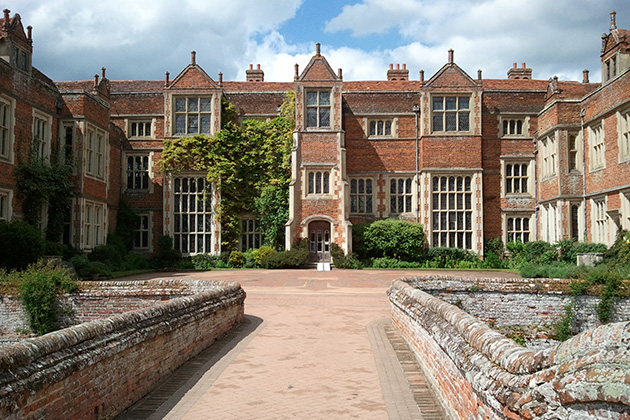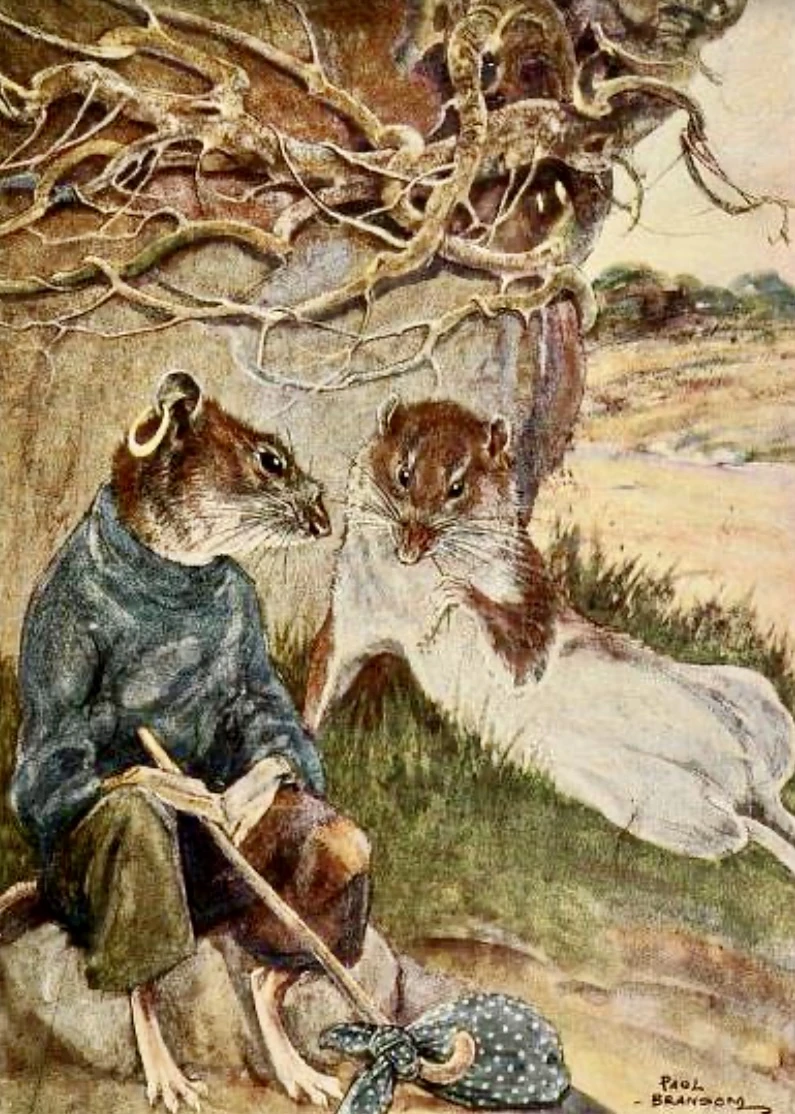Exploring 'The Wind in the Willows Sydney': A Guide to the Classic Tale in Australia's Harbor City

Nestled in the heart of Sydney, The Wind in the Willows comes alive in a unique way, offering both locals and visitors a chance to explore the enchanting world of Kenneth Grahame’s beloved characters. This guide delves into the various sites and experiences throughout Australia’s harbor city that celebrate the timeless tale of friendship, adventure, and the beauty of nature. From scenic riverbanks to charming attractions inspired by Mole, Rat, Toad, and Badger, readers will discover how Sydney pays homage to this classic story. Join us on a whimsical journey to uncover the connections between this literary masterpiece and the vibrant city.
The Wind in the Willows: A Sydney Perspective
The charm of The Wind in the Willows transcends geographical boundaries, and in Sydney, this beloved classic resonates with many. The story, originally penned by Kenneth Grahame, captures the essence of companionship and adventure through the eyes of Mole, Rat, Toad, and Badger. Sydney's picturesque landscapes can evoke the idyllic river scenes depicted in the narrative, allowing readers and visitors to connect with the timeless themes of friendship, nature, and the allure of escapism. As the literary community in Sydney embraces this work, various adaptations and events foster a vibrant appreciation for the tale, elevating its presence in the culture of this coastal city.
Literary Significance in Sydney
The Wind in the Willows holds considerable literary significance in Sydney, often studied in schools and celebrated in literary circles. Its exploration of social dynamics among animal characters invites readers to reflect on human relationships, resonating well within Sydney's diverse communities. Various book clubs and literary gatherings often feature discussions surrounding this classic, emphasizing its themes of nature, motorcars, and adventure that appeal to both young and adult audiences.
Adaptations and Performances
There have been numerous adaptations of The Wind in the Willows in Sydney, ranging from theatrical productions to animated films. Local theaters frequently showcase renditions that bring the beloved characters to life, allowing audiences to experience the whimsical journeys of Toad and his friends in an engaging manner. These adaptations often incorporate Sydney's unique cultural elements, making them relevant and enchanting for local viewers.
Cultural Events and Celebrations
Every year, Sydney hosts a variety of cultural events that celebrate classic literature, with The Wind in the Willows often taking center stage. Such events can include book fairs, storytelling sessions, and workshops, where participants of all ages can engage with the themes of the story. These celebrations help to foster a love for reading and literature, highlighting the enduring impact of Grahame’s work on the literary landscape of Sydney.
Iconic Locations Inspired by the Tale
Sydney boasts various parks and natural settings that echo the idyllic landscapes described in The Wind in the Willows. Areas such as the Royal Botanic Garden or Centennial Park offer lush greenery and tranquil waterways reminiscent of the riverbanks where Rat and Mole frolicked. These locations allow fans of the book to immerse themselves in environments that inspire the imagination, providing a real-life connection to the fictional world.
Educational Initiatives
Educational initiatives in Sydney aim to introduce children to the timeless narratives of The Wind in the Willows. Schools often incorporate this classic into their curriculums, allowing students to explore literary themes, develop reading skills, and engage in creative projects ranging from art to creative writing. This approach not only promotes literacy but also instills an appreciation for nature and storytelling in young learners.
| Aspect | Description |
|---|---|
| Literary Significance | Study in schools, spark discussions on social dynamics. |
| Adaptations | Theatrical shows and films showcasing local culture. |
| Cultural Events | Book fairs and workshops celebrating classic literature. |
| Iconic Locations | Parks reflecting landscapes from the story. |
| Educational Initiatives | Incorporation into curricula promoting literacy. |
Where did Mr. Badger live in The Wind in the Willows?

Mr. Badger lived in a magnificent underground home located in the Wild Wood in Kenneth Grahame's classic novel, The Wind in the Willows. His residence is described as a vast network of tunnels and chambers that provides a cozy and safe sanctuary away from the hustle and bustle of the outside world. The home is not only a retreat but also a place of wisdom and guidance for his friends, particularly for Mole and Rat.
Location of Mr. Badger's Home
Mr. Badger's home is nestled within the Wild Wood, a dense and expansive forest characterized by its mysterious atmosphere and plentiful wildlife. The underground aspect of his dwelling serves several purposes:
- Protection from predators and harsh weather.
- Seclusion, allowing Badger and his friends to escape the troubles of the outside world.
- Comfort, with spacious rooms and an inviting hearth.
Design and Structure of the Home
The layout of Mr. Badger's home is expansive and intricately designed. Various chambers lead to one another, filled with both utility and comfort. The features of his home include:
- A large entryway that leads into the heart of the residence.
- Cozy living quarters where Mr. Badger can entertain guests.
- Storage areas filled with provisions for the colder months.
Symbolism of Mr. Badger's Home
Mr. Badger's residence symbolizes stability and safety. In a world filled with chaos, it acts as a pillar of strength and sanctuary for the other characters. The significance can be summarized as follows:
- Wisdom, as Badger often serves as a guide for his friends.
- Community, providing a space for camaraderie.
- Nature, reflecting Badger’s connection to the natural world.
The Role of Mr. Badger within the Home
Within the confines of his home, Mr. Badger embodies different roles that highlight his character. As a host and mentor, he plays an essential role:
See also:
- Host, welcoming Mole and Rat into his home with warmth.
- Protector, offering safety and security to his friends.
- Guide, sharing life lessons and wisdom with those who visit.
Significant Events at Mr. Badger's Home
Several important events unfold within the walls of Mr. Badger’s home, contributing to the narrative. Key moments include:
- Rescue of Mole when he is lost in the Wild Wood.
- Planning sessions for various adventures with Rat and the others.
- Confrontation with the character of Toad regarding his reckless behavior.
What is the mental illness in The Wind in the Willows?
:quality(75)/https%3A%2F%2Fassets.lareviewofbooks.org%2Fuploads%2F201803MintoGrahame.jpg)
The presence of mental illness in The Wind in the Willows is particularly embodied in the character of Toad. He exhibits behaviors that can be interpreted as indicative of Obsessive-Compulsive Disorder (OCD) or Impulse Control Disorder. Throughout the narrative, Toad experiences uncontrollable impulses, particularly regarding his obsession with motorcars. This obsession leads to reckless behavior and ultimately causes significant disruptions in his life and the lives of his friends.
Toad's Impulsivity and Obsession
Toad's character is defined by uncontrollable impulses, primarily his obsession with motor vehicles. His behaviors can be analyzed through the lens of mental illness, particularly the following characteristics:
- Rash Decision-Making: Toad often makes hasty decisions without considering the consequences, such as when he steals a car or engages in dangerous driving.
- Obsessive Behaviors: His fixation on motorcars escalates to a point where it consumes his thoughts and actions, showcasing patterns similar to those seen in OCD.
- Addiction to Thrills: Toad's need for excitement leads him to repeatedly put himself and others in perilous situations, resembling impulsive behaviors often associated with disorders related to control.
The Impact on Relationships
Toad's mental condition significantly affects his relationships with other characters, especially his friends Mole and Rat. Their feelings and responses reflect the complexities of friendship when faced with mental illness:
- Frustration: Mole and Rat often feel exasperated by Toad's reckless behavior and inability to recognize the impact of his actions on those around him.
- Concern: Rather than simply criticizing Toad, they often express genuine concern for his well-being, highlighting the challenge of empathy in dealing with mental health issues.
- Support and Intervention: They attempt to support Toad, even going so far as to rescue him from his own poor choices, which illustrates the lengths friends may go to for someone struggling with mental illness.
Symbolism of Toad's Obsession
The obsession with motorcars serves as a symbolic representation of deeper psychological struggles. Toad's fixation can be seen as a metaphor for various societal issues:
- Consumerism: His incessant desire for the latest cars represents the dangers of material obsession that can lead individuals to lose sight of what truly matters.
- Freedom vs. Responsibility: Toad's pursuit of freedom through his obsessions conflicts with the responsibilities he has to his friends and his home, mirroring the struggle many experience in balancing personal desires with societal expectations.
- Escape from Reality: Toad's auto-centric addiction can also be interpreted as a desire to escape his own problems and insecurities, a common theme for individuals facing mental health challenges.
Friendship and Mental Health in the Narrative
The theme of friendship in The Wind in the Willows highlights the importance of community support when dealing with mental health issues. The interactions between Toad, Mole, and Rat exemplify this:
- Empathy and Understanding: Mole and Rat's understanding of Toad's condition reflects the significance of empathy in supporting a friend who is struggling.
- Patience: Their patient approach shines a light on the necessity of patience when assisting a friend who exhibits challenging behaviors due to mental illness.
- Non-Judgmental Support: They provide a judgment-free support system for Toad, emphasizing the critical role of acceptance in healing and recovery.
Resolution and Growth
Toad’s journey throughout the story ultimately leads to personal growth and resolution. Despite his struggles, there are key elements to his character development:
- Realization of Consequences: Toad undergoes a transformation as he begins to realize the repercussions of his actions on himself and those around him.
- Acceptance of Help: His acceptance of support from friends signifies a vital step towards recovery and a positive outlook on change.
- Rebuilding Relationships: The narrative concludes with Toad starting to mend his friendships, demonstrating that recovery from mental illness often involves reconstructing social bonds.
Where was Wind in the Willows filmed?

The filming location for Wind in the Willows primarily took place in the English countryside, with particular emphasis on the areas around the Oxfordshire and Buckinghamshire regions. This choice of location beautifully captured the idyllic landscapes that are central to Kenneth Grahame's beloved characters and story. The film utilized various scenic spots that mirrored the rich greenery, gentle rivers, and countryside charm depicted in the book, allowing audiences to immerse themselves in the enchanting world of the characters such as Mole, Ratty, and Toad.
The English Countryside as a Filming Location
The decision to film in the English countryside was pivotal in bringing the narrative of Wind in the Willows to life. This choice provided an authentic backdrop that reflected the environmental settings described in the original story. Not only did the landscapes serve as a visual treat, but they also played a crucial role in evoking the nostalgia associated with rural life, which is a strong theme throughout Grahame's work.
- Inspiration from the book's landscapes
- Real rural settings enhancing authenticity
- Connections to traditional English life
Specific Locations Used in Filming
During the production of Wind in the Willows, several specific locations were chosen that exemplified the characteristics of the story's settings. These locations included the lush riverbanks, scenic woodlands, and quaint villages that embody the serene beauty of the countryside. Filmmakers sought out areas that aligned with the quaint charm portrayed in the book, ensuring that key scenes resonated with both visual and emotional fidelity.
- Riverbanks reflecting Ratty's lifestyle
- Woodlands representing adventure and exploration
- Villages capturing the essence of Toad's escapades
The Role of Natural Lighting in Filming
Natural lighting played a vital role in capturing the essence of the English landscape throughout the film. Filmmakers leveraged the changing light conditions to enhance mood and tone, creating visually appealing scenes that resonated with the themes of friendship and adventure. The use of daily sunlight helped bring out the vibrant colors and textures present in the scenery, drawing viewers deeper into the story's enchanting world.
See also:
- Use of golden hour for dramatic scenes
- Fog and mist to evoke mystery
- Lighting to reflect character emotions
Cultural Significance of the Locations
The locations chosen for filming Wind in the Willows are steeped in cultural significance and contribute to the broader narrative surrounding British folklore and literature. Many of these areas are tied to historical references and have long inspired artists and writers alike. By choosing these spots, the filmmakers paid homage to the rich literary history of the countryside, thus enhancing the film's cultural resonance.
- Connection to British literary tradition
- Inspiration for other creators and storytellers
- Promotion of regional storytelling and culture
Impact of Filming Locations on the Film’s Reception
The choice of filming locations was critical in shaping the audience's perception and reception of Wind in the Willows. Viewers found themselves captivated by the enchanting visuals that complemented the whimsical nature of the story, contributing to its appeal across generations. The authenticity of the landscapes helped invoke a sense of nostalgia, making it resonate even more with fans of the classic tale.
- Aesthetic appeal attracting audiences
- Emotional connections through scenery
- Enduring legacy of the film influenced by locale
Where does Ratty live in Wind in the Willows?

Ratty, or the Water Rat, from Kenneth Grahame's The Wind in the Willows, lives in a charming houseboat situated on the banks of the River Thames. His cozy abode reflects his love for the river and nature, filled with all the comforts he enjoys. The houseboat is described as a quaint and cozy spot where Ratty spends his days, ultimately representing his character's affinity for a relaxed and simple life close to water.
Location of Ratty's Home
Ratty's home is positioned along the picturesque River Thames, specifically in the countryside area, allowing him easy access to his favorite pastime—boating. The river provides a serene and idyllic setting, which is essential to Ratty's character.
- Proximity to Water: Ratty's home being on a houseboat allows him to always be near the water.
- Countryside Landscapes: The location offers beautiful scenes that enhance the peaceful life he leads.
- Accessible River Routes: Being on the river aids in his adventures with friends like Mole and Toad.
Characteristics of Ratty's House
The houseboat where Ratty lives is described as filled with various comforts and items that reflect his personality. The cozy interior, along with charming decorations, emphasizes a homely feel that invites visitors warmly.
- Cozy Atmosphere: The houseboat is often depicted as warm and welcoming.
- Decorative Elements: Ratty's taste can be seen in the furnishings and decorations throughout the home.
- Functional Spaces: Areas for cooking, entertaining, and relaxing showcase his lifestyle.
Life on the River
Life on the River Thames significantly impacts Ratty's daily routine and worldview. The river offers him a place to engage with nature, participate in outdoor activities, and enjoy the companionship of his friends.
- Boating Adventures: Ratty often takes leisurely boat rides along the river.
- Exploration: The river allows Ratty to explore the nature around him, discovering new places.
- Friendship Gatherings: Many interactions with Mole and other characters occur on or near the river.
Symbolism of Ratty's Home
Ratty's houseboat serves as a symbol of contentment and simplicity within the story. It represents the ideal of a peaceful, unhurried life in harmony with nature while emphasizing themes of friendship and adventure.
- Natural Harmony: His houseboat signifies a perfect balance between human habitation and the natural world.
- Contentment: The simple pleasures Ratty enjoys illustrate a vital theme of finding joy in life's small moments.
- Social Connections: The home becomes a gathering place that strengthens friendships throughout the narrative.
Comparison with Other Characters' Homes
Contrasting Ratty's houseboat with the homes of other characters, such as Toad's gaudy house or Mole's cozy burrow, highlights distinct values and lifestyles within the story. Each dwelling underscores different aspects of life in the narrative.
- Toad's Opulence: Toad's home represents wealth and extravagance, contrasting sharply with Ratty's simplicity.
- Mole's Comfort: Mole's burrow emphasizes coziness, while Ratty’s home highlights freedom and adventure.
- Different Perspectives: Each home showcases the various characters’ views on life and what constitutes happiness.
Questions from Our Readers
What is the main theme of 'The Wind in the Willows'?
The main theme of 'The Wind in the Willows' revolves around the importance of friendship and the value of home. The story explores the adventures of its animal characters, highlighting how their relationships and experiences shape their understanding of the world and their sense of belonging.
Who are the main characters in 'The Wind in the Willows'?
The key characters in 'The Wind in the Willows' include Mol, Ratty, Toad, and Badger. Each character represents different traits and lifestyles, contributing to the narrative and illustrating the diverse aspects of friendship and adventure.
What makes Sydney's adaptation of 'The Wind in the Willows' unique?
Sydney's adaptation of 'The Wind in the Willows' is unique due to its vibrant interpretation and local cultural influences, incorporating elements that reflect Sydney's landscape and atmosphere, thus providing a fresh perspective on the classic tale.
Is 'The Wind in the Willows' suitable for children?
Yes, 'The Wind in the Willows' is considered highly suitable for children, offering engaging storytelling with valuable life lessons about friendship, adventure, and the appreciation of nature, making it a beloved classic for readers of all ages.
See also:

If you want to read more articles like Exploring 'The Wind in the Willows Sydney': A Guide to the Classic Tale in Australia's Harbor City, we recommend you check out our Landscaping category.
Leave a Reply
Related Articles